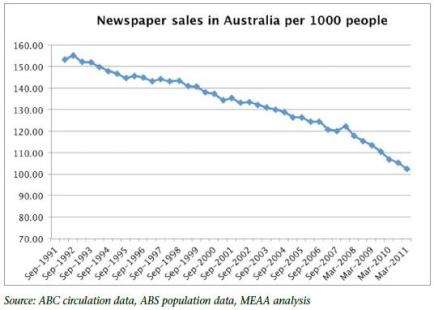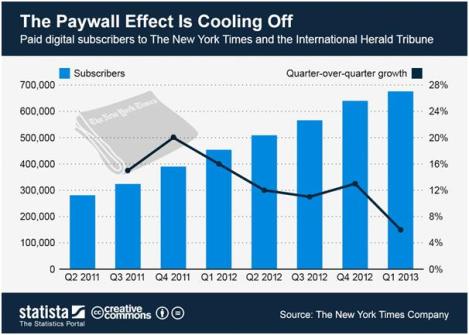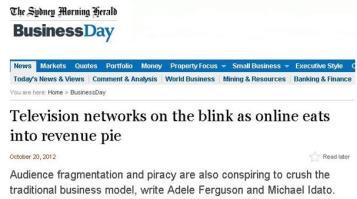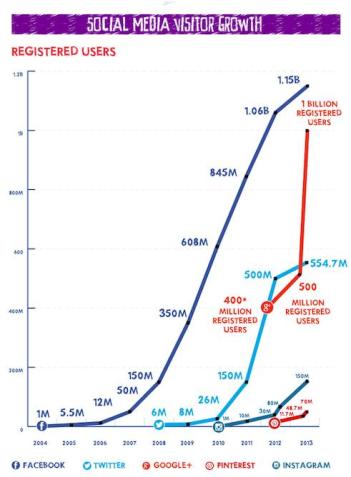The Inexorable Shift from Traditional to Social Media

Occasionally people ask how I got involved in social media. I worked in media monitoring for many years and one of the biggest benefits of working in that industry is oversight, being able to see media trends and changes as they evolve.
You could see how a single news report could build into a political firestorm, how one interview could make or break a career. You could track issues from inception to culmination, detailing how they were adapted and built across the various media platforms, and how each iteration swayed public sentiment one way or another. And from this position of oversight, it was also easy to see the disruption caused by social media and online content.
We could see media habits changing, conversations migrating to new mediums, the fundamental shift this was causing in the media cycle as we knew it. As such, the question for me is never about why anyone would get into social media, it’s ‘why wouldn’t you?’ But don’t take my word for it, I can show you what I mean.
The Digital Shift
The disruption of new content sources is obvious when you look at the data. For example, here are the national daily newspaper circulation figures from the UK over the last six years:
Source: The Guardian
Those figures are similar in Australia:
Nothing ground-breaking there, right? As has been well documented, the newspaper industry has copped the biggest kicking in the rise of online content. Early on, many traditional publishers didn’t see digital content as a significant threat, an attitude partly based on protectionism and partly dictated by previous experience – challengers had come and gone before, there was no reason that this would be different. But then, of course, what could they do about it either way? They’d established revenue models based around traditional publishing – other than integrating their own online content and advertising models faster than they did, the change was inevitable, there was little they could do to stop the shift.
As the above graphs show, circulation numbers have fallen significantly, and continue to decline year-on-year. Many smaller publications have already collapsed, those that haven’t likely will in the near future. While there is still life in print, its heartbeat is fading. The once unfathomable prediction of a time when physical newspapers would no longer exist is becoming more plausible every day.
In order to stem that revenue flow, newspapers turned to paywalls, a move that has succeeded in slowing the process, but even they are now reaching a plateau.
Source: Statista
The problem with paywalls is they rely on the consumers need to access the content behind them – do people need to pay for news and information on your site if they can get the same for free someplace else? The challengers coming into the market don’t have the same overheads and are structured on more agile, adaptive business models and unless traditional publishers are able to provide consistently compelling content behind their paywalls, that audience will continue to decline over time.
High revenue targets, mixed with the challenge of integrating changes in media consumption, have left the press industry reeling, working to maintain relevance as expectations change all around them. And the medium itself is only part of the challenge in holding audience attention.
The Changing Definition of News Content
 The biggest fundamental shift facing the media industry is this: traditional publishers are no longer the gatekeepers of information. Online platforms are faster, more accessible and more interactive. Access to free news sources – reliant on advertising dollars, not cover price – struck the first blow to traditional publishing, but social media has cranked the pressure up even further, and has quickly become the key vehicle driving traditional outlets towards obsolescence.
The biggest fundamental shift facing the media industry is this: traditional publishers are no longer the gatekeepers of information. Online platforms are faster, more accessible and more interactive. Access to free news sources – reliant on advertising dollars, not cover price – struck the first blow to traditional publishing, but social media has cranked the pressure up even further, and has quickly become the key vehicle driving traditional outlets towards obsolescence.
Again, we saw this first-hand in media monitoring – over time, the disruption of digital media was eating away at traditional sources. In press, there were fewer pages coming into our systems to be processed – regional publications shutting down, metros getting thinner. In broadcast, the effect was slightly different – there wasn’t a drop in content, as such, but there was a noticeable change in news ‘quality’, driven by user demand.
In days past, the crucial periods of the daily broadcast media cycle were:
6am to 9am: Breakfast TV and radio programs
4pm to 6pm: Drive time radio
5pm to 7:30pm: TV news block
These were the times that brands both wanted and didn’t want to be mentioned, contextually relative. Audiences needed to be tuned-in at these times because if they weren’t, they weren’t informed, simple as that – they missed out on the latest discussions and updates. But with the advent of online, that cycle changed, and changed even more as mobile internet access became more prevalent.
The news cycle was now 24/7 – if the story you were most interested in wasn’t being covered by the major outlets, it was being covered online, forcing publishers into a new battle for audience attention. The spread of wi-fi, and thus, constant connectivity, helped fuel the rise of social platforms and suddenly the traditional sources were no longer the only places to get information. Up against a faster, more customizable, more adaptive foe, broadcasters were forced to concede ground.
How this ground was conceded was in news quality – and I use the term ‘quality’ from a subjective standpoint, not as a means of critique. What we saw was more entertainment and light news pieces coming into the news stream. On the evening news you were getting more cute animal stories, celebrity romance updates – content that seemed out of place in our historical ‘news’ sense.
Afternoon bulletins incorporated light talk-style segments – basically, the content that was generating clicks online had started to seep into the news feed. Because that’s what people wanted, that’s what people were voting for, via clicks, what they wanted more of. Control over the news agenda was shifting into the hands of the online audience and as content got lighter, political and business stories decreased, thus, a decline in quality, from a media monitoring perspective.
The change was clearly evident in our broadcast results – summaries of radio and TV programs are created by the broadcast monitoring team and alerts are subsequently sent to clients based on keyword mentions within those summaries – company names, issues they’re tracking, etc. Over time, we’d always seen a direct correlation between input (the number of summaries created by the team) and output (the number of alerts sent to clients) – which makes sense, more content going in increases the likelihood of relevant mentions coming out. But from late 2010 we saw that pattern change. For the first time, the correlations were not clearly evident.
There’d been no alteration in policy or process, no large scale change in client base, yet the news cycle had become less predictable – we could no longer confidently forecast the company outcomes based on the work we put in.
The only variant we couldn’t account for was the content itself. The news feed had changed. What was once stable was now in constant flux, because the very nature of what news was had been re-defined. For our purposes, news quality had declined – the same amount of content was being covered but fewer alerts were being sent – and that change in focus forced a re-assessment of our processes in order to maximise what had become the new news stream.
And the main driver behind that content shift?
Media Fragmentation
What happened is, the audience took control. People now had the ability to decide what they watched and when they watched it, and an abundance of new providers were rising online to compete for their attention. Whereas in the past you could reliably know where the majority of eyeballs would be at any given time of day, we were now seeing a shift in audience engagement – compare the above press and broadcast graphs to these figures from social media:
Source: Useful Social Media
As you can see, between 2011 and 2012, Facebook closes in on 1 billion users, Twitter blows up, Google+ begins. The media landscape was fragmenting, separated not by age or by gender, but by relevance. People started building their own media centres based on personal preferences and interests, finding groups and blogs, following sources that catered to their specific needs.
On one hand, this made things more complex, as options for reaching and connecting with your audience became far more widespread. But user actions also became more traceable – every click a digital breadcrumb to follow. Either way, it was clear that the dynamic had shifted. The audience had taken control – if you wanted to reach them, you’d have to start going where they were. You’d have to go find them.
The Changing of the Guard
And this is the fundamental shift that people are adapting to in modern communications and marketing – whereas in time past, people were broadcast to by various sources, told what was happening and what was important, that dynamic has changed. Now every person is a potential broadcaster in their own right, beaming their thoughts to billions of people around the world.
This has shifted the spread of media – whereas once word-of-mouth was limited by proximity, that barrier has been blown away, with each voice demanding to be heard. You’re no longer looking to reach an audience based on demographics aligned to age brackets, you’re looking to utilise hundreds of communications channels – and those channels are not just platforms, but people, social media users, influencers within their own groups.
Through the data left online, brands need to establish who, specifically, their audience is, by preference, by interest, by name. There aren’t any more hours in the day, people are still engaged in media at the same rate they’ve always been – if not more – but as the numbers suggest, traditional sources are less and less likely to be the ones they’re engaging with.
And as more interactions are facilitated via social networks, consumer habits and expectations are evolving in-line:
“72% of People Who Complain on Twitter Expect a Response Within an Hour”
– Source: HubSpot
And here’s the thing: Expectations like that don’t just come out of no where. Expectation is built on learned experience – people expect brands to respond within an hour because brands are responding within an hour. As social channels grow in importance, more and more organisations are meeting this real-time demand. More brands meeting it means increased expectation across the board, underlining the need for all businesses to be listening to social channels.
If you’re not responding, maybe someone else is, and as consumer behaviour evolves and further incorporates online interaction – based on their ongoing experiences with other brands – being absent could leave you sitting alone at your party. Singing your favourite tunes on the karaoke machine, your own echo the only response.
This is shift I’ve seen in the media landscape, the migration towards social media as a core, if not the core, communications medium.
Logic vs Reason
 Of course, that’s the logical argument, the reason why, as a media and communications professional, I want to be involved and understand the medium. But that’s not the reason, the motivation behind why it excites me. Those motivations are more interest-based, preferential. I’m involved in social media because I enjoy it, it’s exciting to see it grow and develop. It’s an evolution of traditional media process, and there’s three big reasons why I absolutely believe this to be the case:
Of course, that’s the logical argument, the reason why, as a media and communications professional, I want to be involved and understand the medium. But that’s not the reason, the motivation behind why it excites me. Those motivations are more interest-based, preferential. I’m involved in social media because I enjoy it, it’s exciting to see it grow and develop. It’s an evolution of traditional media process, and there’s three big reasons why I absolutely believe this to be the case:
- It’s interactive. It gives people the opportunity to play a part in the news of the day, rather than being passive receivers of information. Talkback callers and letter writers have always been a critical piece of the media puzzle – social enables that interaction on an infinitely wider scale. Social also allows people to choose the media inputs of their preference, platforms and creators of your choice can be allowed into your personal information hub, which you can tailor and refine to your own specific needs and wants.
- It’s available. Social media only works when it’s social, and as such, it’s also highly user friendly and accessible. Anyone and everyone can get online and post, share and comment on anything they wish. This enables people to be more open about their likes and dislikes, and to find likeminded people based on those interests. Even selfies, much derided as a narcissistic tool of the younger generation, they can serve a significant purpose in building self-esteem and connecting with people you’d otherwise never have reached. Sure, there can be a dark side to that same notion, but the greater alignment of common goals and interests is an amazing opportunity, and one we won’t fully understand the impact of for years to come.
- It’s a new world. Unlike traditional media where everything’s been tried, everyone’s been in the industry for years and knows better than to try out some crazy new thing, in the social media world, everything is new. No one can definitively say ‘this is wrong’ or ‘you shouldn’t do that’. There are best practices, for sure, but even then, you might do the opposite and find success. And given the reach potential, the availability of tools and platforms and the opportunity sitting there waiting to be tested, you can try out new things. And you have the numbers right there to see what works and doesn’t. It’s exciting to be able to think of different approaches, new ways to use these systems and platforms, alternate angles with which to view the data. No one knows everything. We’re all testing, we’re all trying new things, developing understanding as we go. It’s an amazing opportunity.
It’s these reasons, along with the communications shift, that have brought me to social media. This is why I’m actively involved in the social landscape. Ignore it at your peril.
 Originally titled “The Fragmentational Shift from Traditional to Social Media” and published on andrewhutchinson.com.au. It is republished here with permission.
Originally titled “The Fragmentational Shift from Traditional to Social Media” and published on andrewhutchinson.com.au. It is republished here with permission.Jan Gordon
Latest posts by Jan Gordon (see all)
- Curatti Best Articles of 2022 (And Happy New Year 2023!) - December 28, 2022
- Curatti Best Articles of 2021 (And Happy New Year 2022!) - December 31, 2021
- Curatti Best Articles of 2020 (And Happy New Year 2021!) - December 31, 2020










